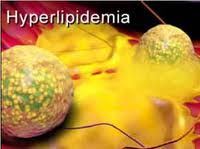· FH (Familial Hypercholesterolemia) is caused by defects in the LDL receptor. There are two well-described phenocopy syndromes related to defects in other genes along the same pathway; they are non-classical FH (caused by mutations in the ApoB 100 gene)and a more severe autosomal recessive form of familial hypercholesterolemia (caused by changes in the LDLRAP1 gene).
In AD (Autosomal dominant) disorders the disease occurs in three successive generations, with both males and females affected and transmitting risk.
In recessive disease, both parents are typically either carriers or affected, and so disease tends to occur horizontally (e.g. within a sibship) rather than in successive generations.
Diagnosis and Treatment
In AD (Autosomal dominant) disorders the disease occurs in three successive generations, with both males and females affected and transmitting risk.
In recessive disease, both parents are typically either carriers or affected, and so disease tends to occur horizontally (e.g. within a sibship) rather than in successive generations.
Diagnosis and Treatment
· Strong Family History (Early MI, Stroke, Hypertension, Xanthomas, Hyperlipidemia) The lipid profile in classic FH is an elevated LDL (range usually 200–400 mg/dL ), a normal HDL, and normal TG.
HMG Co-enzyme reductase inhibitors are the first line choice for treatment of patients with FH.
· Non-genetic factors such as diet, hypothyroidism, and nephrotic syndrome can result in markedly elevated LDL cholesterol in some cases.
· Familial combined hyperlipidemia (FCH) is more common than FH. It does not have a Mendelian inheritance pattern. FCH is associated with a later presentation of heart disease and lacks the cutaneous features of FH and LDL levels in the 200-300 range.
Distinguishing Familial Hypercholesterolemia (FH) and Familial Combined Hyperlipidemia (FCH)
Disorder
|
FH
|
FCH
|
Inheritance
|
AD and AR
|
Familial clustering
|
Genes
|
LDLR, APOB, LDLRAP1
|
Unknown
|
Cutaneous findings
|
Yes
|
No
|
Laboratory Values
|
LDL range is usually 200-400 mg/dL
|
LDL range is usually 200-300 mg/dL
|
Age at MI presentation
|
30s
|
50s
|
Treatment
|
HMG-CoA reductase statins
|
HMG-CoA reductase statins
|

Comments
Post a Comment
Post Your Reply and Give Your Opinion About the Post